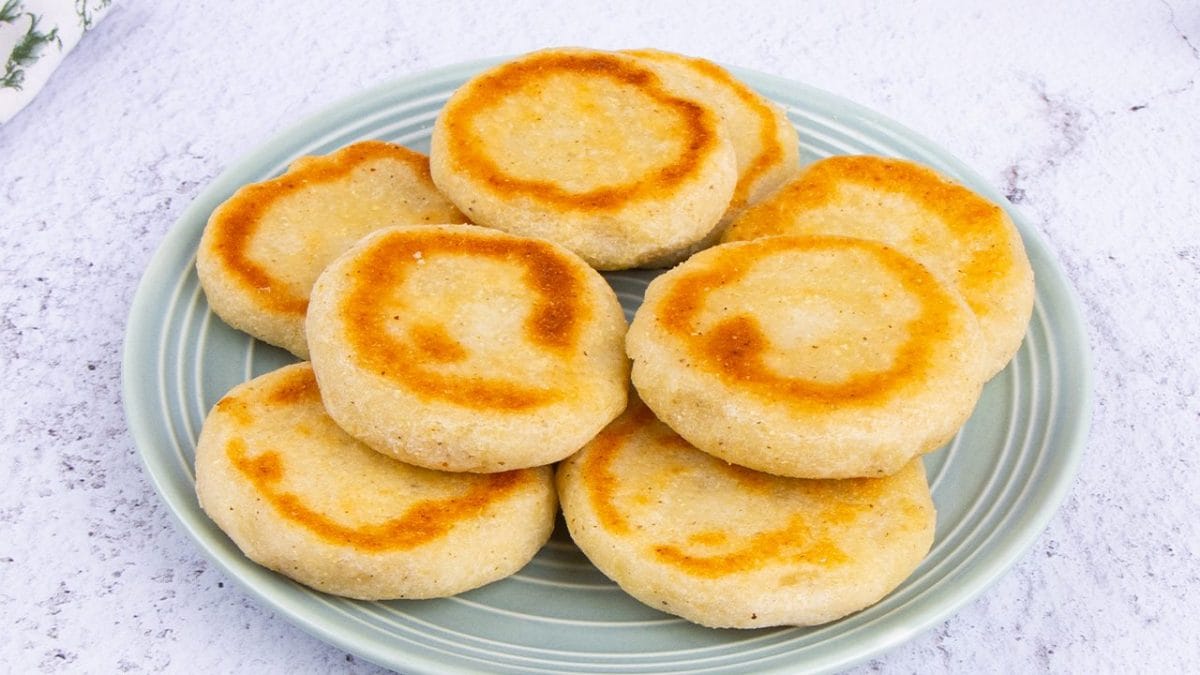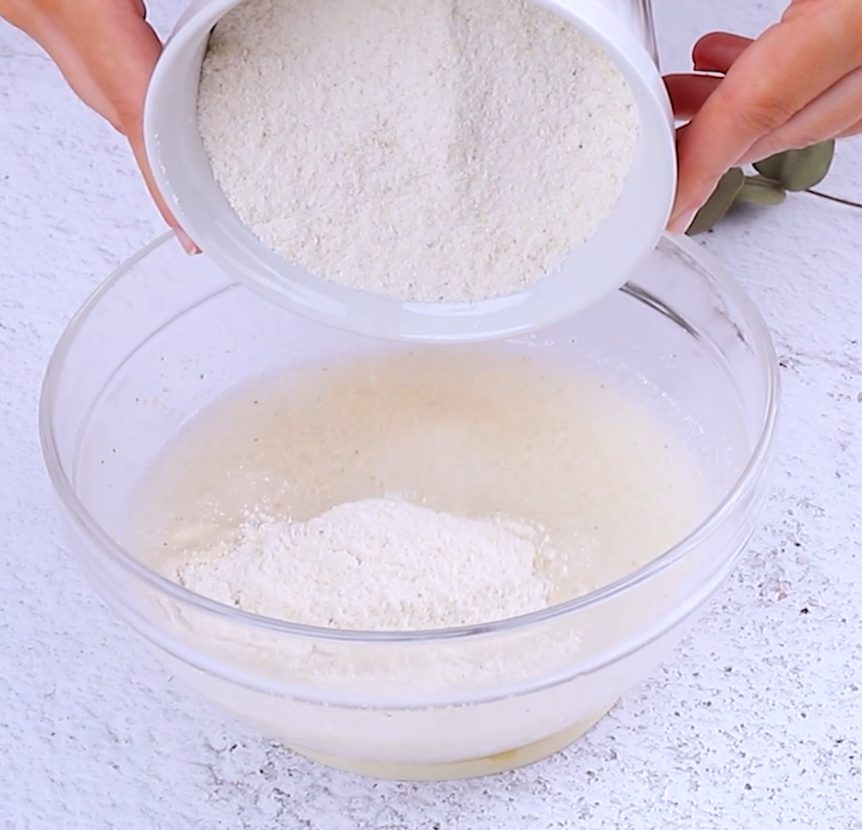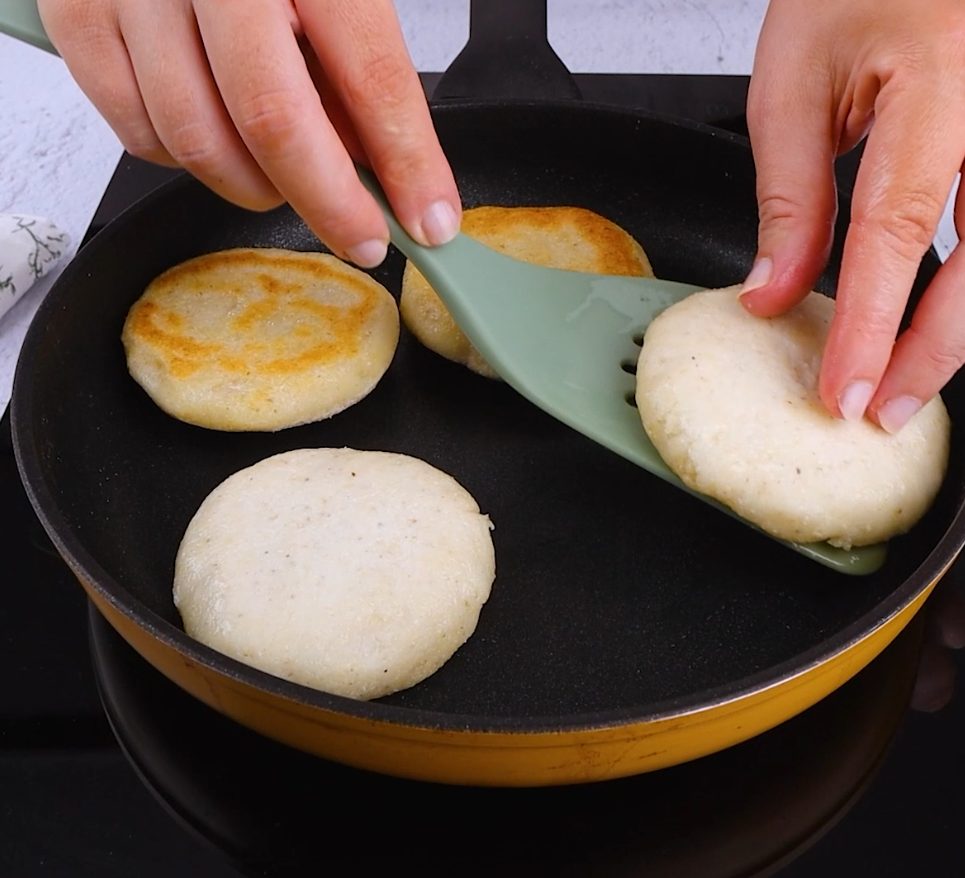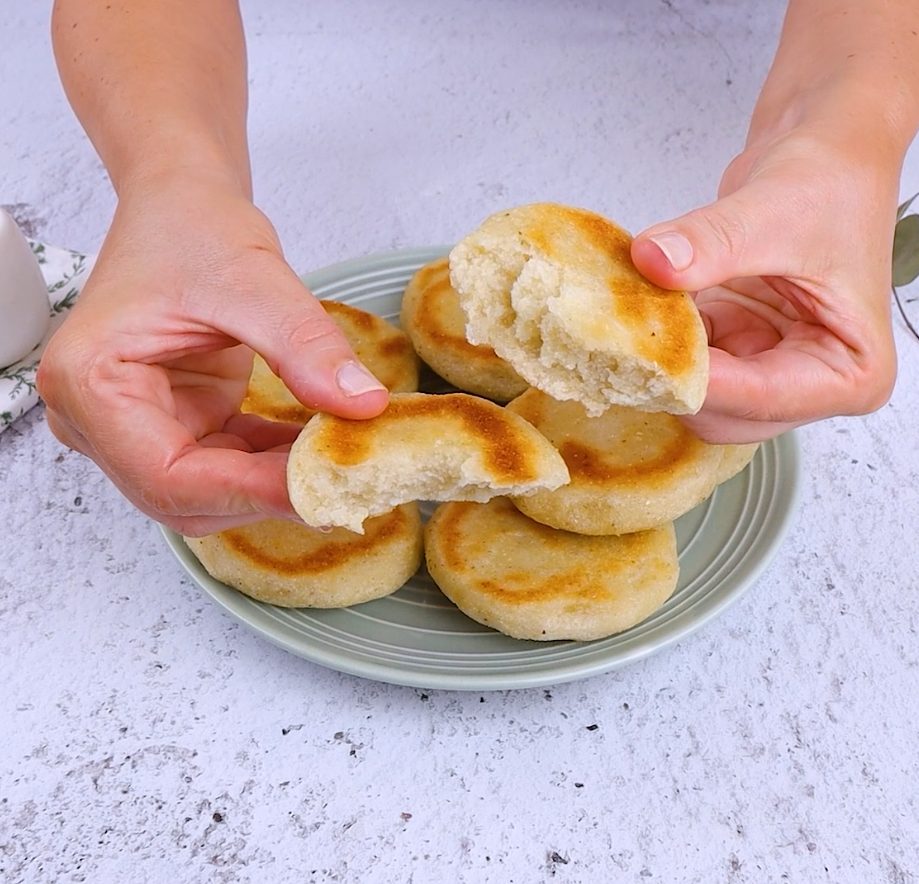
Venezuela boasts many delicious and interesting dishes, and Arepas is one of them. These aren't your average flatbreads. Arepas are a cultural cornerstone, a symbol of Venezuelan cuisine. Unlike their thinner Colombian cousins, Venezuelan arepas are thicker and boast a bigger textural contrast. Golden on the outside with a soft, pillowy center that's simply begging to be filled. Arepas are great for breakfast, perfect for soaking up scrambled eggs, fried plantains, or creamy avocado. For lunch, they transform into hearty pockets filled with shredded beef (carne mechada), flavorful black beans (caraotas negras), or melty queso fresco. And as an afternoon snack? Arepas come to the rescue again, toasted and slathered with guava jam or a sprinkle of salty queso blanco.
What are Venezuelan Arepas?
Arepas are more than just Venezuelan street food. Made with just three main ingredients—pre-cooked cornmeal (masa harina), water, and salt— Venezuelan Arepas are a testament to the power of common ingredients. Believe it or not, arepas have been a staple food in northern South America since pre-Columbian times! The word "arepa" itself is derived from the indigenous term "Erepa," which simply means "corn." Back then, indigenous tribes would grind maize kernels into a dough and cook it on clay griddles, laying the foundation for the modern arepa. Fast forward a few millennia, and arepas became a Venezuelan staple.
Venezuelans take their arepas seriously, with regional variations boasting unique characteristics. Arepas from the Andes tend to be smaller and thicker, while those along the coast are larger and flatter. No matter the size or shape, though, one thing remains constant: they’re all equally delicious! But don't be fooled by the arepa's savory reputation. While stuffed with meats, cheeses, and beans are popular, arepas can also be enjoyed as a sweet treat. Split them open and fill them with jams, dulce de leche, or even fresh fruit for an interesting twist. So, next time you bite into a Venezuelan arepa, remember—you're not just enjoying a tasty meal, you're experiencing a culinary legacy that stretches back centuries!
Tips
- The key to a perfect arepa lies in the masa (dough). Use high-quality pre-cooked cornmeal (masa harina) specifically labeled for arepas. Don't skimp on this ingredient, as it greatly affects the texture and flavor.
- The water content is crucial for achieving the right consistency. Start with warm water and gradually add it to the masa harina, mixing well after each addition. The dough should be slightly sticky but not crumbly. A good test is to pinch a small piece—if it holds its shape without cracking, you've got the right consistency.
- Once you've formed your dough balls, let them rest for about 10 minutes. This allows the masa to hydrate fully, resulting in a softer and more pliable dough that's easier to work with.
- When shaping your arepas, aim for a consistent thickness of about ½ inch. Pat the dough balls into discs, ensuring smooth edges to prevent cracks during cooking.
- Use a preheated cast iron skillet or griddle over medium heat. A hot surface is essential for achieving a golden-brown crust without overcooking the inside.
- When flipping your arepas, be gentle! Use a spatula and lift from the edges to avoid tearing. A well-cooked arepa should have a slight golden-brown char on both sides.
- A good indicator of doneness is the sound. When the arepa sizzles less while cooking, it's likely close to being finished.
- Feel free to experiment with flavors! Add a pinch of sugar to the dough for a slightly sweet twist, or incorporate grated cheese for extra flavor.
- Popular fillings include shredded beef, black beans, queso fresco, avocado, or even a fried egg.
Colombian Vs. Venezuelan Arepas
Colombian arepas are typically simpler and less stuffed, often enjoyed with cheese, butter, or a hint of salt. They are flatter and denser, sometimes served as a side dish or breakfast item. In contrast, Venezuelan arepas are known for their versatility and fillings. They are thicker and can be split open to be generously filled with a variety of ingredients such as shredded beef, black beans, cheese, avocado, and more. This makes Venezuelan arepas more of a meal in themselves, offering a wider range of flavors and textures. Both versions highlight the staple nature of cornmeal in Latin American cuisine, yet each brings its own regional twist to this beloved dish.
What Are Venezuelan Arepas?
Arepas are flatbreads made from pre-cooked cornmeal (masa harina) that are a staple food in Venezuela. They are enjoyed for breakfast, lunch, dinner, and snacks.
What Do Arepas Taste Like?
Arepas themselves have a mild, slightly corny flavor. They are a blank canvas for flavor and can be enjoyed plain, stuffed with savory ingredients, or filled with sweet fillings.
Are Arepas Gluten-Free?
Yes, traditionally made arepas are gluten-free as they use cornmeal, which is naturally gluten-free. Just double-check the ingredients label of your masa harina to ensure it's pure cornmeal.
What Kind Of Cornmeal Do I Need For Arepas?
You'll need pre-cooked cornmeal specifically labeled for Arepas, also known as masa harina. This type of cornmeal has already been cooked and treated with lime, making it easier to work with and giving the arepas their characteristic texture.
Why Are My Arepas Falling Apart?
There could be a few reasons. The dough might be too dry, so try adding a little more water. You might not be kneading it enough – aim for a smooth and elastic dough. Finally, ensure your pan is hot enough before adding the arepas.
How to Store Venezuelan Arepas
Leftover arepas can be stored in an airtight container for up to 2 days at room temperature. To reheat, simply wrap them in a damp paper towel and microwave for 30-60 seconds, or warm them in a skillet until heated through.
Ingredients
How To Make Venezuelan Arepas
;Resize,width=712;)
Combine the water, salt, and oil in a mixing bowl. Give them a quick stir to make sure the salt dissolves. Then, gradually add the flour while mixing gently.
Combine the water, salt, and oil in a mixing bowl. Give them a quick stir to make sure the salt dissolves. Then, gradually add the flour while mixing gently.
;Resize,width=712;)
Once the arepas are cooked through, transfer them to a serving dish.
Once a dough has formed, pinch off pieces, aiming for about 95 grams each. Roll them gently to form balls. Then, flatten each ball into a disc shape.
;Resize,width=712;)
Heat up a pan with some vegetable oil. Once hot, carefully transfer the arepas to the pan. Cook them for a few minutes on each side, keeping an eye out for a golden-brown color.
;Resize,width=712;)
Once the arepas are cooked through, transfer them to a serving dish.

;Resize,width=767;)
